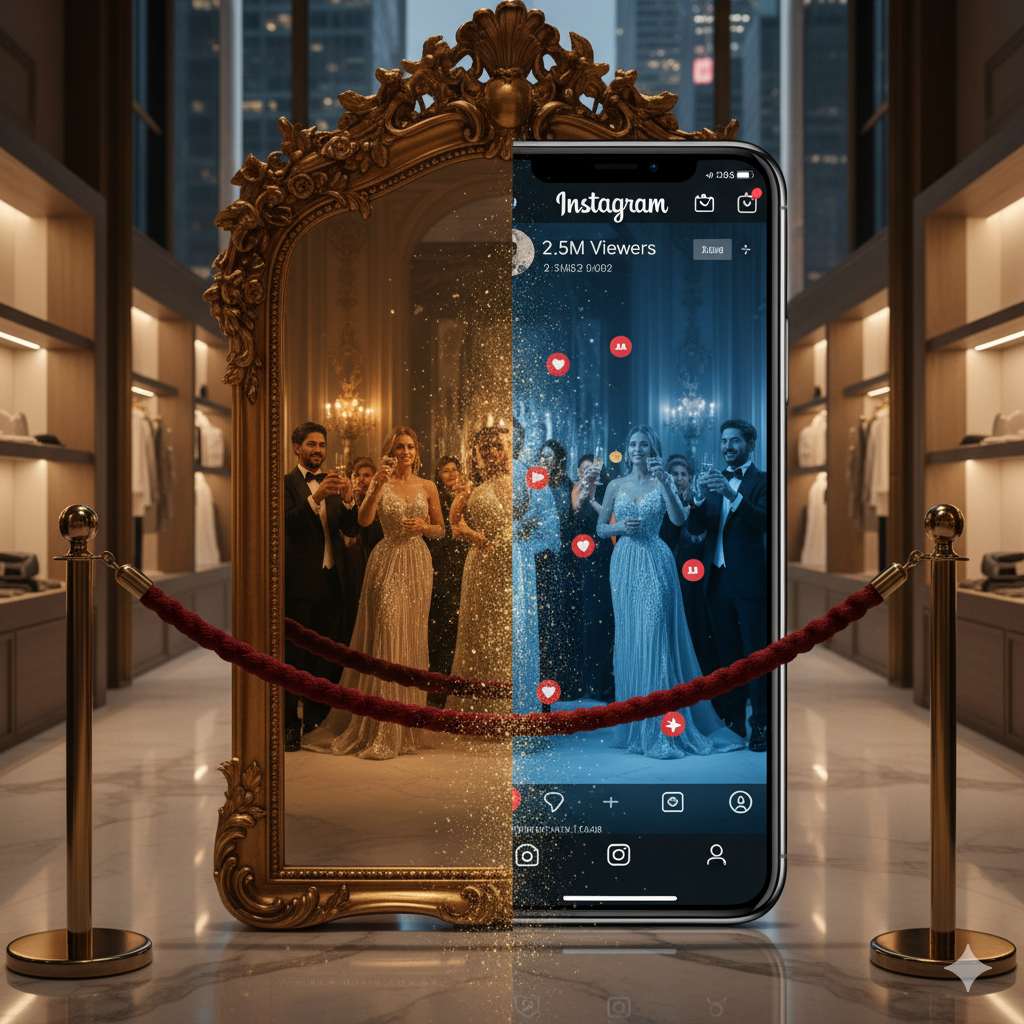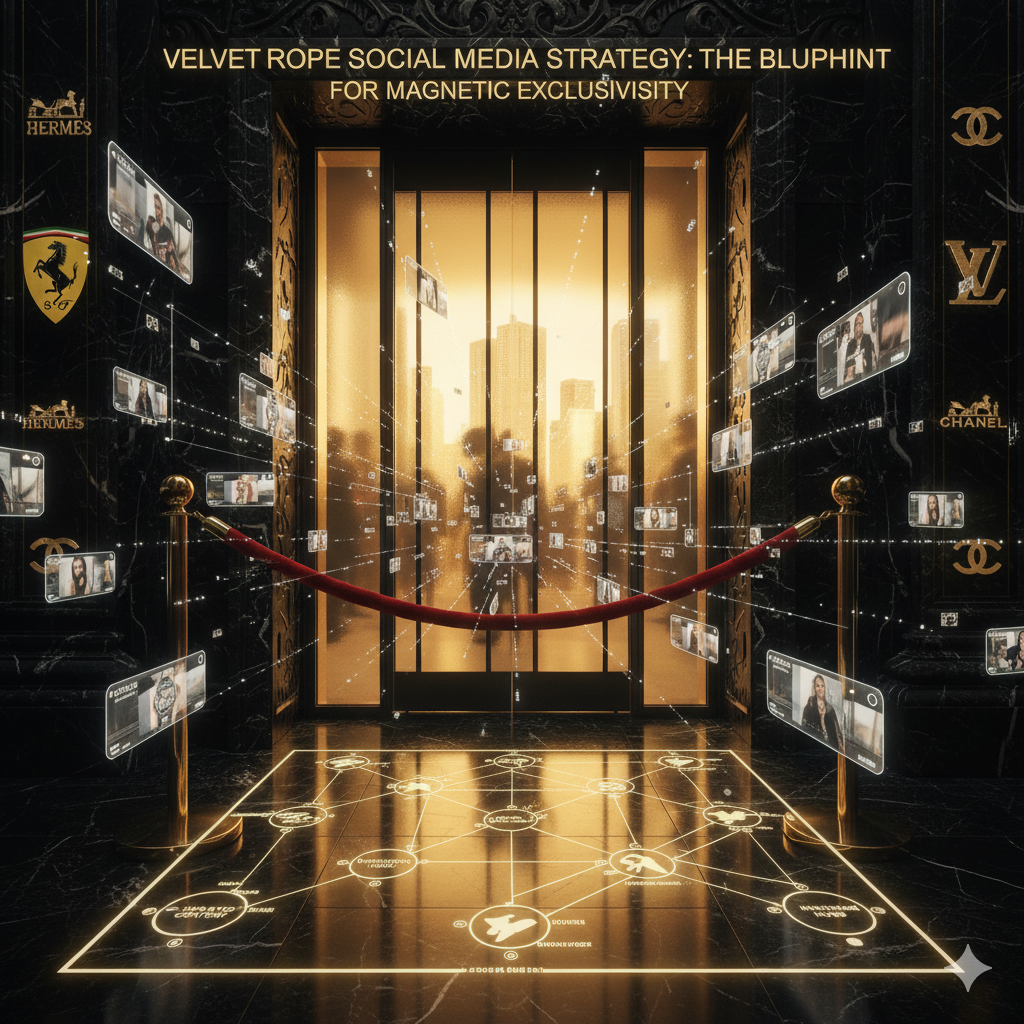Listen up. While everyone’s chasing clicks and impressions like amateur gamblers at a penny slot, the real money players understand something fundamental. Print magazines are experiencing a renaissance in luxury markets, and the numbers don’t lie. Moreover, the question isn’t whether print works anymore. Instead, it’s about understanding when each medium delivers maximum returns. Consequently, smart marketers are weaponizing both channels strategically rather than picking sides.
The Print Advantage: When Tangibility Equals Profitability
Here’s what the suits at Goldman never tell you. Print advertising delivers 112% ROI, crushing other media channels. Furthermore, consumers demonstrate 70-80% higher recall rates for print advertisements compared to online alternatives. That’s not sentiment—it’s hard data that translates directly into revenue.
The tactile experience creates undeniable psychological impact. Specifically, affluent audiences perceive glossy magazine content as more credible and prestigious. Additionally, 76% of magazine impressions reach middle and upper-class demographics. Therefore, you’re not just buying exposure; you’re purchasing access to decision-makers with actual purchasing power.
Digital Dominance: Speed, Scale, and Sophisticated Targeting
Digital channels offer advantages that print can’t touch. Namely, digital advertisements yield 300% higher ROAS compared to traditional media channels. However, that’s not the complete picture worth examining here.
Real-time analytics enable instant optimization impossible with physical publications. Meanwhile, marketers adjust campaigns dynamically based on engagement metrics and conversion data. Subsequently, budgets shift toward high-performing channels within hours rather than months. Email marketing alone generates $42 in revenue for every dollar spent. Consequently, digital provides measurable accountability that traditional media struggles to match.
The Luxury Consumer Paradox Worth Millions
High-net-worth individuals behave differently than mass-market consumers. Interestingly, print magazines are transforming into luxury leisure products rather than information vehicles. Similarly, publications like Vogue and Architectural Digest maintain strength through exclusive positioning.
The affluent demographic values curation over convenience. Furthermore, they seek immersive experiences that digital scrolling cannot replicate. Therefore, print represents status and sophistication in ways pixels never will. Premium publications targeting high-net-worth individuals leverage this psychology masterfully, creating collectible products rather than disposable content.
Print Engagement Metrics That Drive Revenue
Engagement depth matters more than superficial impressions. Notably, 46% of magazine subscribers demonstrate high engagement with print advertisements. Additionally, magazine advertising generates 36% increases in brand favorability alongside 47% improvements in advertisement awareness.
Dwell time significantly exceeds digital alternatives where attention spans measure in seconds. Moreover, physical magazines remain in homes for weeks or months. Subsequently, advertisements receive multiple exposures without additional investment. Print also conveys luxury and quality through production values that digital formats struggle to communicate. Hence, brands associate themselves with prestige by appearing in premium publications.
Digital Metrics: The Numbers Behind Performance
Digital marketing provides unprecedented measurement capabilities that revolutionize campaign management. Specifically, average click-through rates reach 3.17% for search networks across industries. Furthermore, conversion rates average 9.7% for landing pages when properly optimized.
Cost efficiency remains compelling despite lower engagement quality. Meanwhile, Google Ads delivers $2 for every dollar invested on average. However, luxury brands often achieve significantly higher returns through sophisticated targeting. Additionally, content marketing improves engagement for 72% of marketers while driving sustained traffic. Therefore, digital channels excel at building awareness and generating immediate responses.
The Hybrid Strategy: Playing Both Sides of the Table
Winners don’t choose between print and digital—they dominate both. Consequently, brands like Bentley and Vice leverage print for brand-building while using digital for performance marketing. Moreover, integrated campaigns amplify reach while maintaining brand consistency across channels.
QR codes bridge the physical-digital divide effectively when implemented strategically. Similarly, print drives initial awareness while digital captures immediate conversions. Therefore, measurement becomes holistic rather than siloed by channel. The most sophisticated marketers track customer journeys across touchpoints rather than evaluating channels independently. Subsequently, attribution models reveal how print and digital work synergistically rather than competitively.
Cost Analysis: Where Your Money Actually Goes
Budget allocation requires understanding true costs beyond surface-level pricing comparisons. Particularly, print production involves design, printing, and distribution expenses. However, these costs deliver sustained exposure without ongoing spending. Conversely, digital demands continuous investment to maintain visibility and traffic.
Print CPM rates appear expensive initially but deliver superior quality impressions. Meanwhile, digital offers lower entry costs with variable performance outcomes. Additionally, print provides guaranteed placement while digital competes in auction environments. Therefore, comparing direct costs misses the strategic value each channel provides. Smart marketers evaluate total campaign effectiveness rather than isolated cost metrics.
Luxury Brand Case Studies: Proof in Performance
Real-world results demonstrate luxury lifestyle print versus digital magazine ROI differences dramatically. Specifically, Small Luxury Hotels launched Swoon magazine integrating print with multichannel campaigns successfully. Furthermore, the publication appeared in boutique hotel rooms while driving Instagram engagement simultaneously.
Burda Verlag’s collaboration with Audi included 40+ print articles and fashion photoshoots. Moreover, the campaign generated substantial revenue through trusted editorial partnerships. Similarly, Bentley Magazine exemplifies how premium brands utilize collectible publications for long-term relationship building. These campaigns demonstrate integrated approaches rather than either-or decisions.
Audience Behavior: Understanding Consumption Patterns
Demographics significantly influence channel effectiveness and campaign performance outcomes. Particularly, Millennials and Gen Z represent two-thirds of luxury goods sales despite digital nativity. However, these consumers value print experiences for their authenticity and curation.
Technology overload drives affluent audiences toward analog experiences increasingly. Meanwhile, 60% of Millennials genuinely enjoy receiving direct mail despite digital preferences. Additionally, print provides respite from constant digital bombardment and information overload. Therefore, the medium offers psychological benefits beyond pure information delivery. Luxury consumers specifically seek curated, premium experiences that justify premium pricing.
Attribution Challenges: Measuring What Matters
Accurately tracking luxury lifestyle print versus digital magazine ROI requires sophisticated methodologies. Specifically, multi-touch attribution reveals how channels contribute throughout customer journeys. Furthermore, unique promotional codes enable direct response tracking from print campaigns.
Website traffic spikes correlate with magazine distribution timing when analyzed properly. Moreover, brand lift studies measure awareness and perception changes attributable to campaigns. Additionally, customer surveys identify information sources influencing purchasing decisions directly. However, many marketers fail to implement proper tracking mechanisms before launching campaigns. Therefore, establishing measurement frameworks proves essential for meaningful optimization.
The Trust Factor: Credibility Converts
Consumer trust varies dramatically across media channels and significantly impacts conversion rates. Notably, 82% of consumers trust print advertising more than digital alternatives. Additionally, established magazines transfer credibility to advertised brands through association.
Digital faces persistent challenges with ad blocking and general skepticism. Meanwhile, print advertisements receive genuine attention rather than reflexive dismissal. Furthermore, luxury publications maintain editorial standards that enhance advertiser reputations. Hence, brands gain authority by appearing alongside respected content. The credibility differential matters particularly for high-consideration purchases and luxury positioning.
Production Quality: Communicating Luxury Through Medium
Execution quality fundamentally affects perceived brand value and consumer response. Specifically, high-resolution photography and premium paper stocks communicate luxury wordlessly. Moreover, tactile elements like embossing and foiling create memorable sensory experiences.
Digital struggles to convey texture, weight, and craftsmanship effectively. Meanwhile, screen brightness and device variations compromise color accuracy and visual impact. Additionally, print allows larger formats that showcase products with appropriate gravitas. Therefore, production values themselves become marketing messages. Luxury brands understand that how you present matters as much as what you present.
Market Trends: Where the Industry is Heading
Publishers focus increasingly on ROI and sustainability as market dynamics shift. Furthermore, brands utilize targeted print runs with digital personalization capabilities. Meanwhile, augmented reality integration bridges physical and digital experiences seamlessly.
Luxury brands maintain print budgets while competitors retreat from the channel entirely. Consequently, less competition enables greater visibility for committed advertisers. Additionally, publications like NME and Vice are relaunching print editions recognizing renewed demand. Therefore, the market isn’t dying—it’s evolving toward premium positioning and exclusive distribution.
Targeting Precision: Reaching the Right Audience
Digital excels at demographic and behavioral targeting with unprecedented granularity. Specifically, platforms enable audience segmentation based on interests, behaviors, and purchase history. Furthermore, retargeting keeps brands visible to engaged prospects across the internet.
Print offers geographic and psychographic targeting through publication selection and distribution strategies. Moreover, luxury magazines self-select affluent audiences through content and positioning. Additionally, controlled circulation ensures advertisements reach decision-makers rather than mass audiences. However, digital provides real-time optimization impossible with quarterly publication schedules. Each channel offers distinct targeting advantages depending on campaign objectives.
Content Strategy: What Resonates With Affluent Audiences
Message sophistication must match audience expectations and brand positioning requirements. Particularly, high-net-worth individuals respond to storytelling rather than aggressive selling tactics. Furthermore, editorial-style content outperforms traditional advertisements in luxury publications consistently.
Digital enables testing multiple messages to optimize performance before scaling investment. Meanwhile, print demands greater creative confidence due to longer production timelines. Additionally, visual aesthetics matter tremendously for luxury positioning across all channels. Therefore, content quality determines success regardless of medium selection. Cheap creative execution undermines expensive media placements instantly.
Measurement Frameworks: Building Accountability
Robust analytics separate successful campaigns from expensive failures systematically. Specifically, establishing clear KPIs before launching enables objective performance evaluation. Furthermore, customer lifetime value metrics reveal long-term impact beyond immediate conversions.
Print requires patience as awareness builds gradually rather than instantly. Conversely, digital provides immediate feedback enabling rapid iteration and optimization. Additionally, brand tracking studies measure perception changes that financial metrics miss entirely. However, marketers who calculate ROI receive 1.6x higher budgets for marketing activities. Therefore, measurement discipline creates opportunities for increased investment and organizational credibility.
The Verdict: Strategic Channel Selection
Luxury lifestyle print versus digital magazine ROI depends entirely on specific objectives and execution quality. Specifically, print dominates for brand-building, prestige positioning, and engaging affluent audiences deeply. Meanwhile, digital excels at performance marketing, rapid optimization, and demonstrating immediate accountability.
The most successful luxury brands integrate both channels strategically rather than choosing exclusively. Furthermore, they understand that awareness and conversion require different tools and tactics. Additionally, budget allocation should reflect customer journey stages rather than arbitrary splits. Print initiates relationships; digital converts them. Therefore, the winning strategy combines both media thoughtfully. Anyone telling you differently either doesn’t understand luxury marketing or hasn’t played at this level. Period.





